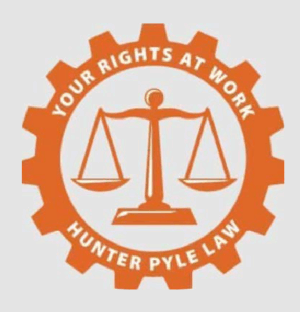Guidelines from the Northern District Regarding Class Action Settlements
The United States District Court for the Northern District of California has issued a document called “Procedural Guidance for Class Action Settlements” (Guidance). The Guidance is extremely helpful, and offers a glimpse at the prevailing wisdom with respect to settlements of class actions, at least in federal court.
The first section of the Guidance addresses motions for preliminary approval (MPAs), making the following noteworthy points:
- Information About the Settlement
Most noteworthy here is that the MPA must call out and explain any differences between the claims in the operative complaint and the claims that are released in the settlement. This is important, because often defendants will push for the broadest possible release, thereby extinguishing as many future claims as possible.
Ethical plaintiffs’ attorneys should resist these efforts and limit the release to the claims that are either plead in the operative complaint, or that could have been plead based upon the factual allegations in the complaint.
- Settlement Administration
The Guidance is clear that any funds designated for settlement administration that are not spend on settlement administration should either go to a cy pres recipient or be distributed to the class members.
(Note: This is a recurring theme, that moneys allocated for a particular purpose should not revert to the defendant if not used for that purpose.)
- Notice
The Guidance assumes that a website will be set up to advise class members of the settlement, with links to the significant documents. This includes the motion for attorneys’ fees. The class notice should also provide instructions in terms of how to access the case documents using PACER or at the court. The class notice should also advise class members to check either PACER or the case website to be sure that the date for final approval has not changed. This implies that if that date does change, class counsel should be sure to update the website to reflect that fact.
- Exclusions
The Guidance counsels that individuals who wish to be excluded from the settlement should only be required to submit a statement to that effect. They should not be required to provide additional information.
- Attorneys Fees
Requests for attorneys’ fees will not be ruled on at preliminary approval. However, the Guidance recommends that the parties include information about their anticipated fee request in the MPA. This information should include the amount of fees that that will be sought, and class counsel’s lodestar estimate.
Importantly, the Guidance states that any funds dedicated to attorneys’ fees that are not used for such fees should be given to the cy pres recipient or distributed among the class members on a pro rata basis. In other words, if the motion for attorneys’ fees is denied (or the amount awarded is less than the amount requested), those moneys should not revert to the defendant. (See above.)
- Incentive Awards
The Guidance recommends that information about the incentive awards be included in the MPA, even though such requests will not be formally considered until the motion for final approval.
The Guidance refers to the case of Radcliffe v. Experian Info. Solutions (9th Cir.2013) 715 F.3d 1157, and counsels parties to be wary of the size of the incentive awards, as well as any conditions placed upon them. In Radcliffe, the Ninth CircuitCourt of Appeals held that the district court had abused its discretion in approving incentive awards that were conditioned upon support of the settlement. As with settlement administration funds and attorneys’ fees, any funds allocated to incentive awards but not used for such should go to the cy pres beneficiary or to the class. (See above.)
- Cy Pres
Following the decisions in Dennis v. Kellogg Co. (9th Cir.2012) and Nachsin v. AOL (9th Cir.2011) 663 F.3d 1064, the Guidance requires that plaintiffs’ counsel explain how any proposed cy pres beneficiaries relate to the subject matter of the underlying lawsuit. In other words, it is important to select cy pres beneficiaries whose work is linked as closely as possible to the claims brought in the case.
- Timeline
Significantly, the Guidance states that motions for attorneys’ fees must be filed at least 14 days before the deadline for objections to the proposed settlement. See In re. Mercury Interactive Corp. (9th Cir.2010) 618 F.3d 988. This requirement–which is meant to ensure that class members have time to consider the request for fees and decide whether to object to it or not–is significantly different from state court, where no such requirement exists.
- CAFA
The Guidance states that parties should be sure to discuss whether CAFA notice is required, and whether the settlement complies with CAFA. Cf. 28 U.S.C. § 1712 (requirements for coupon settlements).
10. Electronic Versions
All proposed orders and class notices should be submitted in Word or Word Perfect to the Presiding Judge’s email address.
The second section of the Guidance makes the following recommendations with respect to motions for final approval (MFAs):
- Class Members’ Response
The MFA should set forth details regarding the response to the class notice: how many class members submitted valid claims, how many opted out, and how many objected to the settlement. The MFA should also respond to any objections received.
- Attorneys’ Fees
Fee motions must included detailed information justifying the attorneys’ request for fees, even where the fees requested are based upon a percentage of the settlement fund. Attorneys should submit detailed, task-based declarations regarding how many hours were spent on different aspects of the case. Attorneys should also be prepared to submit their billing records if the court requests them.
Fee motions must be heard on the same day as the MFA.
- Incentive Awards
Requests for awards to the class representative(s) (also called “incentive awards”) must be based upon admissible evidence of the class representatives’ involvement in the case, and any other justifications that may apply.
The important thing to note here is that the evidence must be “admissible.” This signals that the declarations should be from the class representatives themselves, as opposed to a summary provided by the attorneys.
- Electronic Versions
As with the MPA, electronic versions of any proposed orders must be submitted by email to the Presiding Judge when the motions are filed.
In summary, the Guidance is incredibly helpful to attorneys who file class actions in the Northern District of California, which includes San Francisco, Oakland, and San Jose. The Guidance does not address such thorny issues as claims-made settlements (though it does indicate that the MFA should include information about the number of claims received, which seems to imply that claims-made settlements are acceptable in some circumstances).
Nor does it address reversions-situations in which some portion of the settlement returns to the defendant for various reasons. However, the fact that the Guidance repeats multiple times that funds that are designated for one purpose but not ultimately allocated to that purpose should go to the cy pres beneficiary or to the class members strongly implies that reversions are not favored.
If you think you may have class action claims, or if you are already a class member who has questions about your case, please feel free to contact us for a free consultation. We can be reached at 510.444.4400, or at inquire@hunterpylelaw.com.


